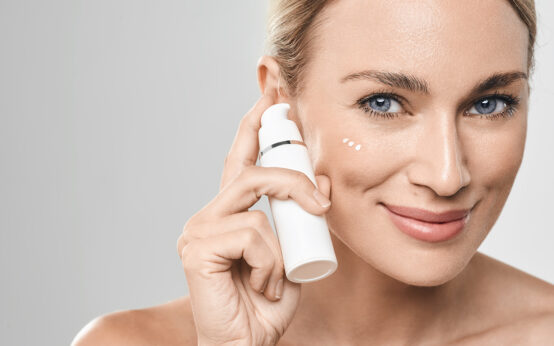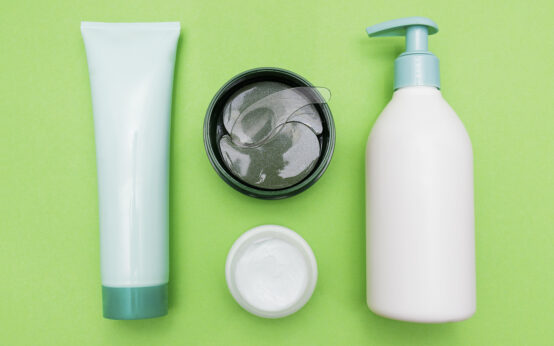Moisturizer, also called emollient, is a substance used to protect, lubricate, and moisturize the skin. These substances mimic the actions of the skin's natural oil, sebum, which performs these functions. The word “emollient” comes from the Latin verb mollire, which means to'mould.' It is therefore important to choose a moisturizer with the proper ingredient profile.
Moisturizing ingredients

When choosing a moisturizer, look for a blend of three essential lipids – ceramides, emollients, and occlusives – and the balance between these three. Look for additional ingredients that can help protect your skin barrier, such as soothing ingredients and ceramides, or try a specialized formula with collagen and exfoliants. Listed below are a few important components of a good moisturizer.
Fragrance is the number one cause of skin irritation and allergic reactions. According to one study, 83% of drugstore creams contain fragrance. Synthetic fragrances, as well as those derived from essential oils, can irritate skin. Fragrances can also be harmful, including geraniol, linalool, and limonene. Fragrances are also commonly used as masking agents in cosmetics, and many of these chemicals are toxic to the skin.
In addition to these important ingredients, moisturizers also contain microbiome-centric ingredients. These ingredients promote healthy skin barrier function, and may be particularly helpful if you have sensitive or dry skin, or if you have recently had a harsh treatment such as a chemical peel. This type of product isn't necessary to keep skin hydrated, but it may help with certain skin conditions. These ingredients may also help with acne breakouts.
Various fatty substances also act as occlusives and block water evaporation. Petroleum jelly is an excellent example of an occlusive, and is found in most moisturizers. It is a natural component of human skin and hydrates parched skin, leaving it soft and supple. Other fatty substances, such as silicone, mineral oil, and waxy substances, can also act as occlusives. In addition to glycerin, there are also ceramides, which are long chains of lipids that are part of the skin's outer layer and are crucial in maintaining the skin's moisture barrier.
The next important ingredient in a moisturizer is glycerin. Glycerin acts as a humectant and helps to lock moisture in the skin's surface. While glycerin is commonly used in moisturizing creams, double-checking the ingredient list for glycerin may be necessary to find one that works best for your skin type. You'll be glad you did.
If you've got oily skin, look for a gel-based moisturizer. This type of moisturizer is the least greasy and will not leave an oily film on your skin. In addition, moisturizers with water-soluble ingredients, also known as humectants, will feel light on your skin while providing adequate hydration. While humectants tend to make your skin feel soft, they also may trap sebum and cause acne flare-ups.
When choosing a moisturizer, make sure to check for glycerin, which is regarded as the most effective humectant. Glycerin can draw moisture from the air but cannot draw it into the skin. It needs to be paired with an emollient in order to work effectively. The combination of glycerin and emollients will keep your skin soft and smooth.
Ingredients in non-comedogenic moisturizers
![]()
The term “noncomedogenic” is used interchangeably with “oil free” and “oil-free.” These terms refer to products that contain no oil or other comedogenic components. These products are often beneficial for people with acne-prone, sensitive, and oily skin types. Noncomedogenic ingredients include mineral oil, hyaluronic acid, and ceramides.
Noncomedogenic products are often tested on volunteer consumer groups to prove their safety and effectiveness. They typically have a rating of 0-2 and are not likely to clog pores. However, this rating does not guarantee that the product contains noncomedogenic ingredients. For instance, some skincare companies advertise their products as “clear skin” and yet contain ingredients that may cause acne. To avoid this, you should opt for a noncomedogenic moisturizer.
A moisturizer that contains noncomedogenic ingredients is better for acne-prone skin because they do not clog pores. The ingredients in such products are a great way to reduce the signs of aging and make skin look radiant. Additionally, these noncomedogenic moisturizers tend to contain healthy emollients such as shea butter and mango butter. This combination of healthy ingredients will keep your skin soft, shiny, and supple.
A noncomedogenic moisturizer is important for oily and blemish-prone skin types. It will prevent skin from blocking its pores, preventing clogging. Noncomedogenic formulas are best for oily, sensitive, and acne-prone skin. These products will reduce the signs of acne and whiteheads. You can try a noncomedogenic moisturizer for a trial run before you find the one that works for you.
The most popular noncomedogenic face creams will contain hyaluronic acid gel and a green tea extract. Some brands may include essential oils and fragrances. Make sure they're noncomedogenic if they're suitable for your skin type. They can also be a great addition to a scented face cream. When shopping for a noncomedogenic face cream, always read the labels. A noncomedogenic moisturizer can last for up to six months when used daily.
Noncomedogenic skin care products contain no comedogenic ingredients. Noncomedogenic ingredients do not cause breakouts, but they may clog pores. Using noncomedogenic skincare products is the best way to get beautiful skin without worrying about acne. This is because noncomedogenic products contain ingredients that won't block your pores. However, some noncomedogenic moisturizers may contain ingredients that can cause irritation and dermatitis.
As a skincare enthusiast, Vaishnavi Kothuri writes articles about skin care. She also recommends noncomedogenic moisturizers based on their formulation and ingredients. She also chooses noncomedogenic products based on their overall merits. You may want to check out her website for more information on skincare. If you're in doubt, read her reviews.
Side effects of moisturizers

The use of moisturizers on the skin of children is associated with few adverse side effects, but they must be used carefully. Various ingredients in moisturizers, including fragrance, sodium lauryl sulphate, and other strong sensitizers, can irritate the skin. In children, moisturizers may worsen their symptoms, causing skin irritation or even skin discoloration. In children, it may also cause allergic reactions, such as contact dermatitis.
Excessive use of moisturizer can cause breakouts, clogged pores, and bumps. Over-moisturizing will also cause your skin to become dry and dull. Excessive use of moisturizer can also cause pimples, make your skin more prone to breakouts, and damage your makeup. While facial moisturizers are concentrated, using too much of them can cause adverse side effects. For this reason, it is vital to follow the instructions on the packaging carefully.
While regular moisturizer use is beneficial for oily skin, daily use may be detrimental to your skin. It can prevent skin cells from renewing and improving, impairing its barrier function and arresting its cellular functions. These side effects can cause skin sensitivity and accelerated aging. Further research should focus on specific ingredients and molecular mechanisms that may cause dryness and irritation on different skin types. And remember that a little bit goes a long way!
In addition to skin irritation and inflammation, moisturizers may also increase your skin's sensitivity to other substances. This is because of the inhibition of EGFR in skin. While these side effects are rare, they can still cause serious consequences in patients who use them on a regular basis. The best solution is to consult a dermatologist for further information. It is recommended that dermatologists monitor patients for signs and symptoms of folliculitis and skin lesions after applying moisturizer.
In a study published in the British Journal of Dermatology, researchers examined the duration of side effects following discontinuation of a facial moisturizing cream. They compared this period with the time required for the skin to regain its original condition. In the study, participants who discontinued their daily use of moisturizers experienced an increase in wrinkles within one month. The researchers concluded that the time required to regain normal skin hydration varies depending on the skin type and age of the subjects.
When applied too often, moisturizers weaken the skin's barrier function. This makes the skin more susceptible to other substances and pollutants. Additionally, the skin is less able to repair itself. This is one of the many side effects of moisturizers. In some cases, this condition may even be life-threatening. The use of moisturizers is recommended for dry skin. In many cases, dry skin can be treated with a different treatment, but in most cases, the treatment is the same.


 Selecting a Face Moisturizer
Selecting a Face Moisturizer  The Best Face Moisturizer For Sensitive Skin
The Best Face Moisturizer For Sensitive Skin  What to Look For in a Moisturizer For Oily Skin
What to Look For in a Moisturizer For Oily Skin  Finding the Best Moisturizer For Dry Skin
Finding the Best Moisturizer For Dry Skin  What to Avoid in a Stretch Mark Cream
What to Avoid in a Stretch Mark Cream  What to Look For in a Moisturizer
What to Look For in a Moisturizer